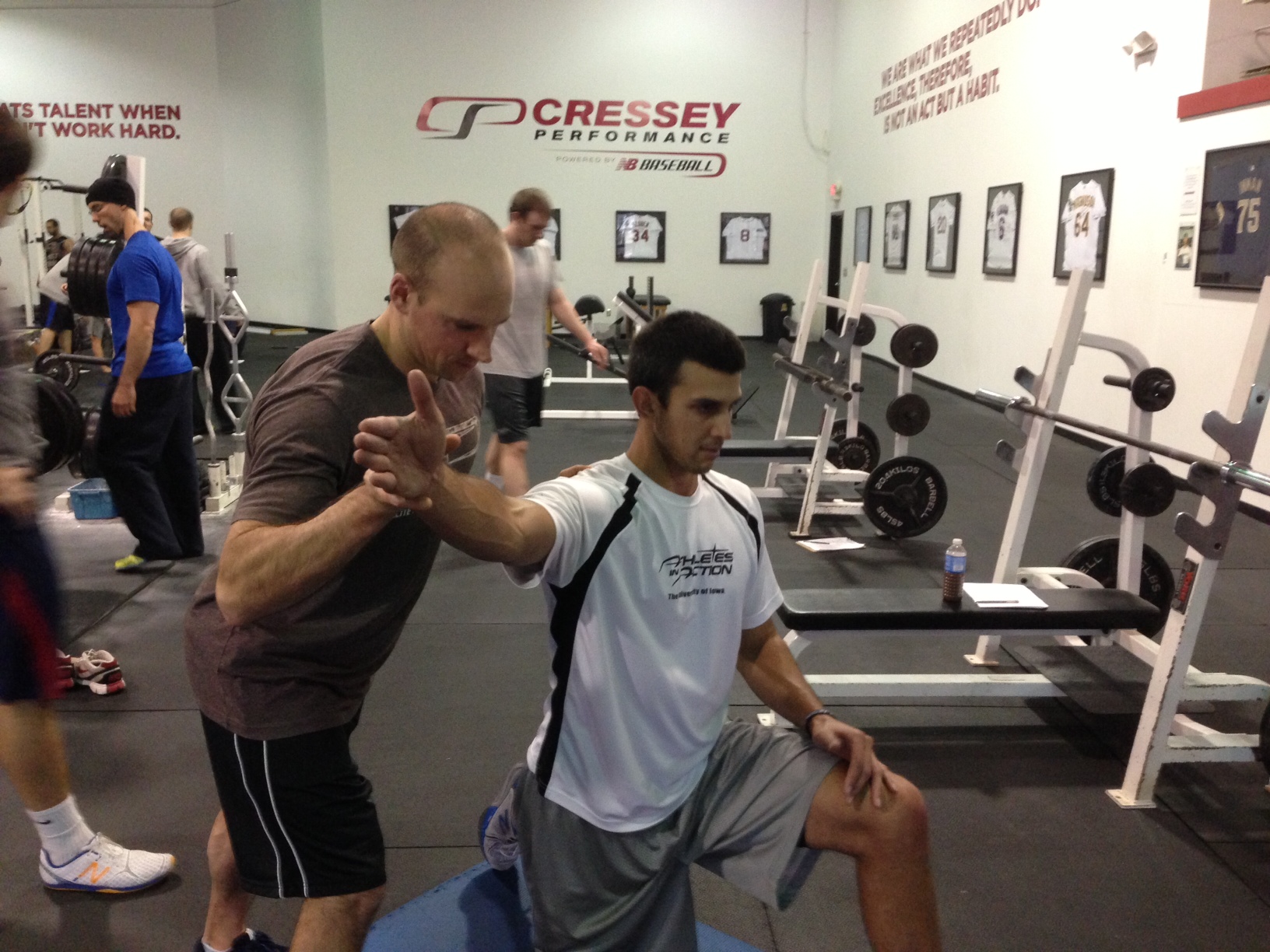Common Arm Care Mistakes: Installment 5
Written on March 6, 2014 at 7:33 am, by Eric Cressey
It's been over a month since I posted an update to this series, so with the baseball season underway, I thought I'd get back to it – and focus on something we see as an in-season problem:
Pitchers not being advocates for themselves with respect to playing other positions games on non-pitching days.
Absolutely nothing drives me crazier than when I hear about a player throwing 6-7 innings, and then being asked to come back and play shortstop or catcher in the next few days. In fact, it might be the very definition of insanity, as it defies a lot of what we know about recovery, fatigue management, and arm stress.
To be clear, pitchers absolutely do need to throw throughout the week to optimize performance and develop. You can't just pitch, then sit around for six days and expect to get better or stay sharp. However, I think we do need to approach what guys do on non-pitching days on a very individualized basis.
If we're talking about starters who are going to throw 60+ pitches at least once a week, they need to stick to playing DH, 1B, 3B, 2B, or OF in the 2-3 days after a start – and preferably throughout the entire week. Sure, there will stil be the possibility for intense throws, but the volume is much lower, and they'll be able to get their legs under them better, as compared to off-balance throws from shortstop, or rushed throws from the catching position.
If we're talking about relievers who just get innings here and there, it's a totally different story. If they're only throwing 15-20 pitches a few times a week, they can play anywhere they're needed. The volume just isn't enough on the mound to make it a very valid concern. The only exception to the rule might be early in the season; if guys are really sore in the 24-48 hours after they pitch, they're probably better off somewhere other than shortstop or catcher.
Now, all this seems well and good – until you realize that just about every 12-year-old in the country says that he plays "pitcher and shortstop." Seriously, I get excited when I hear a young kid who is a catcher, second baseman, or just an "all over" utility guy.

So, as you can see, players don't just need to be counseled on this; they need to be counseled on this at a young age.
A big part of developing starting pitchers over the long haul is helping them to build work capacity, the ability to throw more innings. This obviously gets a lot of attention in the professional ranks with young pitchers who are on strict innings limits. However, it's equally important at the youth levels; you have to build work capacity gradually, especially in athletes who are skeletally immature. The problem with throwing them at shortstop or catcher is that it immediately puts you in a position where you underestimate how much wear and tear is on the pitcher's arm over the course of a season.
Looking for more in-depth baseball insights? Check out one of our Cressey Performance Elite Baseball Mentorships; we'll have events in June, October, and December.

Sign-up Today for our FREE Baseball Newsletter and Receive Instant Access to a 47-minute Presentation from Eric Cressey on Individualizing the Management of Overhead Athletes!
|













